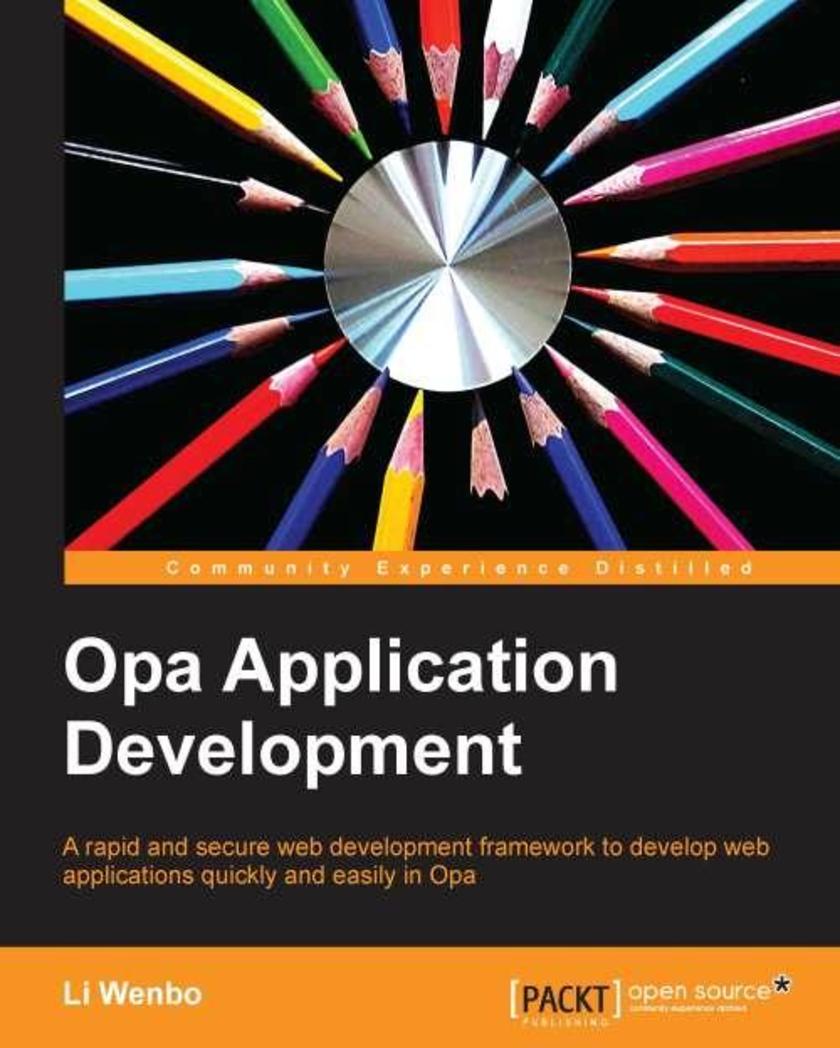
Opa Application Development
¥54.49
It is a tutorial guide to learning how to use Opa with JavaScript, Nodejs, and MongoDB to develop web applications easily and effectively.If you are a web developer who wants to get started with the Opa framework and build web applications with itThen this book is for you. Web development experience is assumed and would be helpful.

Managing Virtual Infrastructure with Veeam? ONE?
¥54.49
This book is aimed at virtualization professionals who want to improve their skills in infrastructure monitoring and management. You need a good understanding of server virtualization and management of virtual environments.

L?VE2d for Lua Game Programming
¥54.49
This book follows a tutorial approach with examples and step-by-step instructions to help explain the key concepts of the L?VE framework as well as everything you need to know about game development using the Lua programming language.L?VE2d for Lua Game Programming is for anyone who is interested in learning about desktop game development.
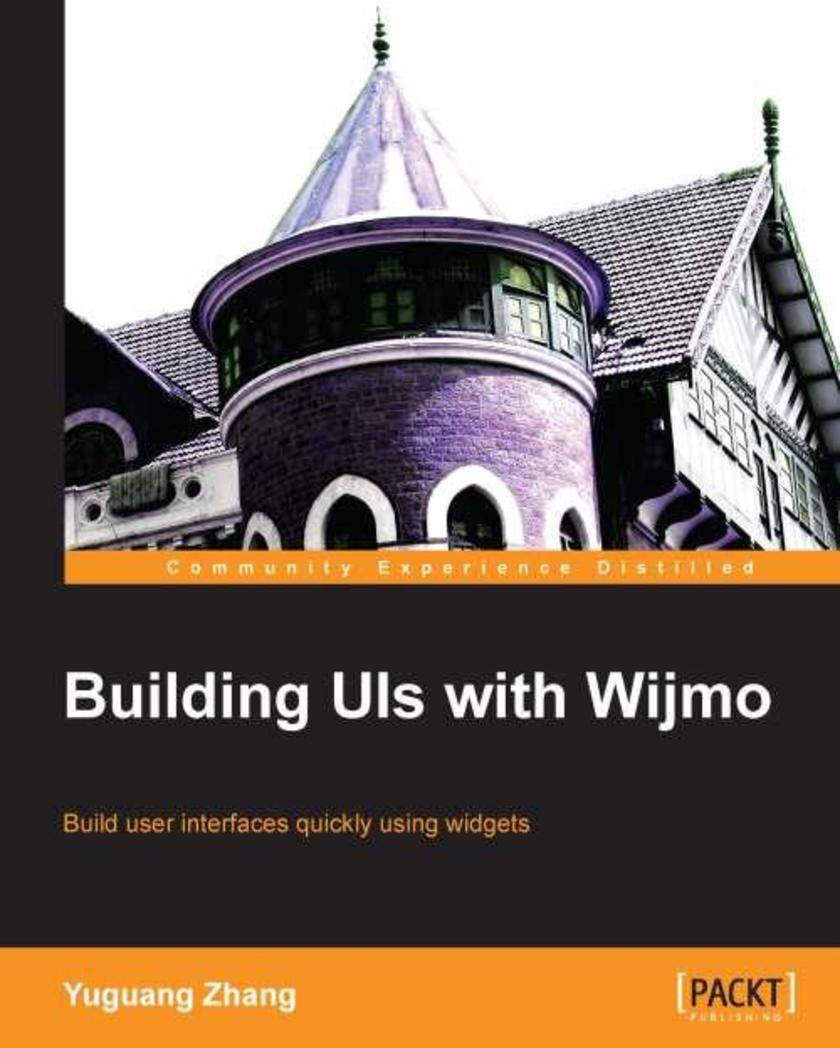
Building UIs with Wijmo
¥54.49
Written with an example-based approach, Building UIs with Wijmo leads you step by step through the implementation and customization of each library component and its associated resources. Reference tables of each configuration option, method, and event for each component are provided, alongside detailed explanations of how each widget is used.Building UIs with Wijmo is targeted at readers who are familiar with HTML, CSS, JavaScript, and jQuery, and have a basic understanding of web development. Although knowledge of jQuery UI is not mandatory, it would be a bonus as it is quite similar to Wijmo. Only the last chapter of the book on extending Wijmo requires advanced CSS and JavaScript knowledge.
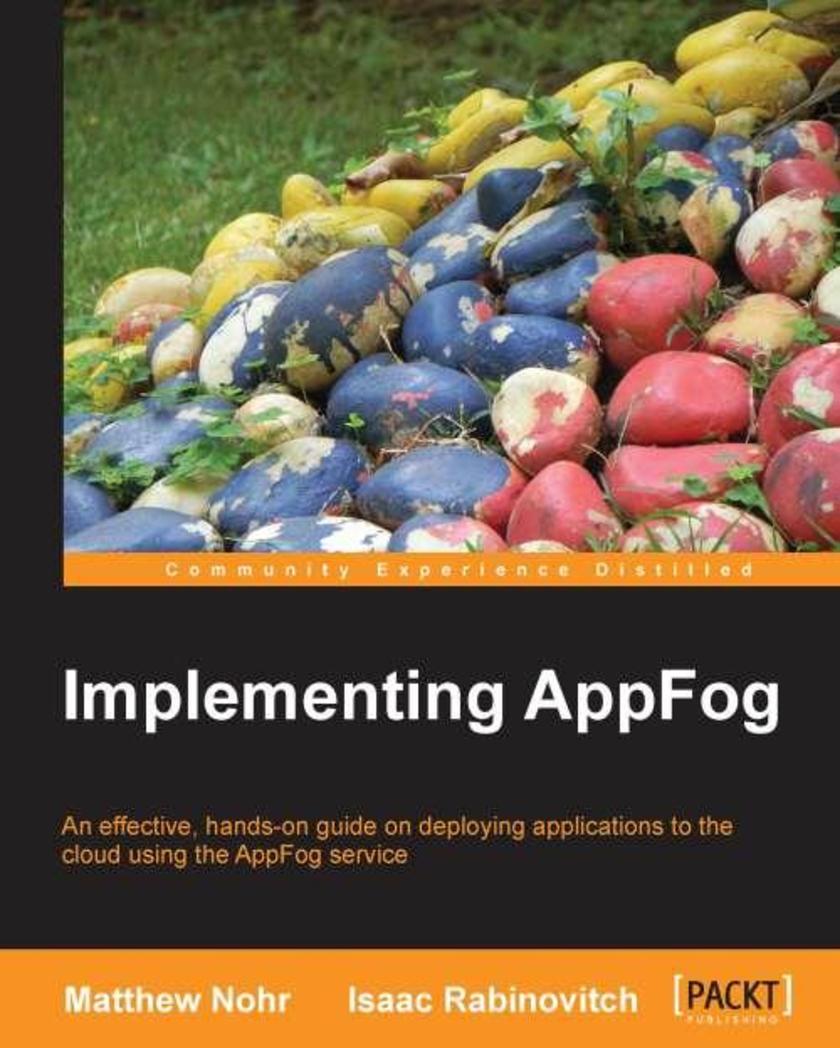
Implementing AppFog
¥54.49
This book is a practical, hands-on guide to implementing and deploying apps on the AppFog platform.Implementing AppFog is for developers who want to be able to upload applications to the cloud, and for implementation specialists, who implement and deploy apps on the AppFog platform. It is best to have Ruby installed, but we will walk you through the installation process if you do not already have it. It would be ideal to have some knowledge of cloud computing and know about the basics of database and network deployment.
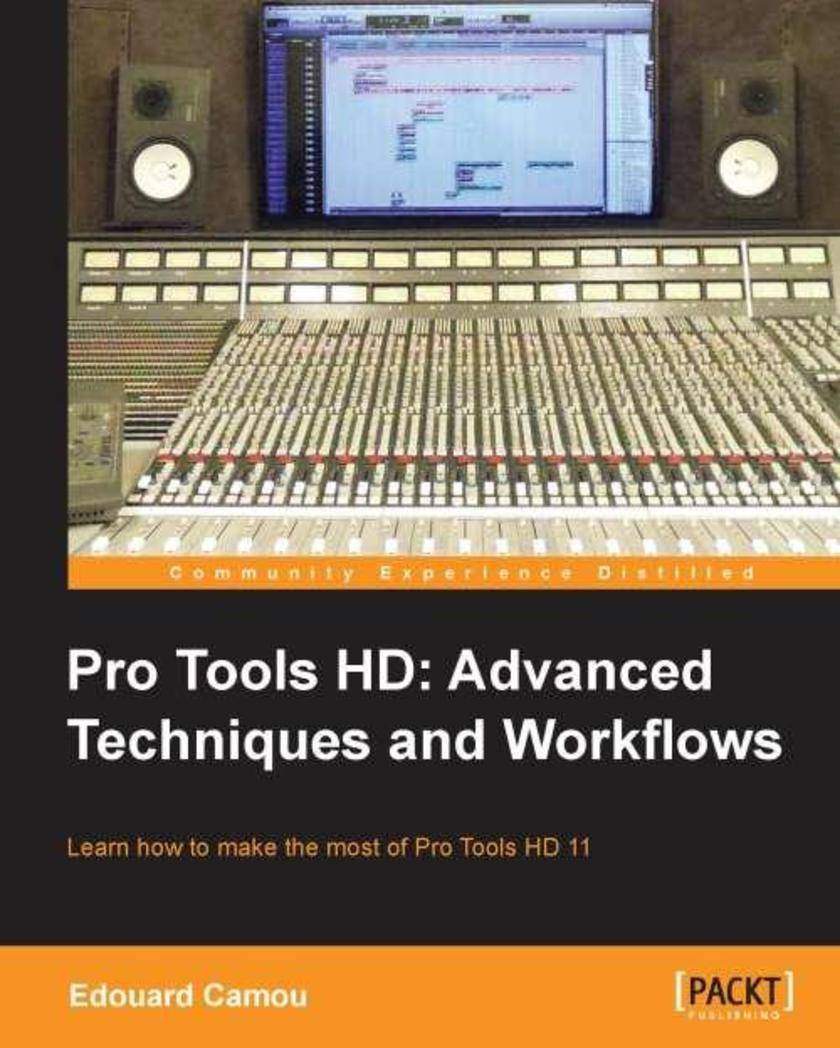
Pro Tools HD 11
¥54.49
An easy-to-follow guide for using Pro Tools HD 11 effectively.This book is ideal for anyone who already uses ProTools and wants to learn more, or is new to Pro Tools HD and wants to use it effectively in their own audio workstations.
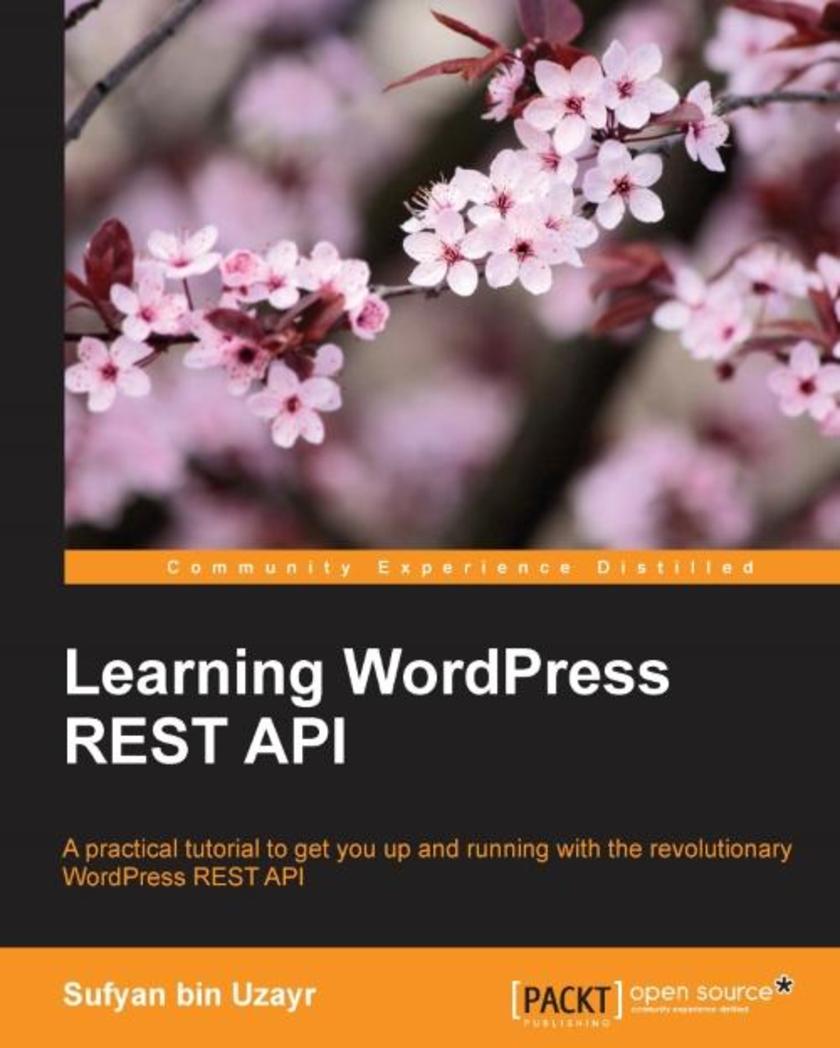
Learning WordPress REST API
¥54.49
A practical tutorial to get you up and running with the revolutionary WordPress REST API About This Book Learn how to run the latest WordPress REST API with various platforms Create exciting apps and manage non-WordPress content with them Secure, export, and manage your data through illustrative examples Who This Book Is For This book is for WordPress developers and designers who want to get a complete practical understanding of the WordPress REST API and leverage it to create fully-featured web apps. What You Will Learn Use the WordPress REST API to read, write, and edit posts Create and work with metadata using the WordPress REST API Work with taxonomies using the REST API Add custom routes and build apps using the WordPress REST API Process requests and integrate with external applications and frameworks Make your WordPress projects ready for the RESTful API standard In Detail The WordPress REST API is a recent innovation that has the potential to unlock several new opportunities for WordPress developers. It can help you integrate with technologies outside of WordPress, as well as offer great flexibility when developing themes and plugins for WordPress. As such, the REST API can make developers’ lives easier. The book begins by covering the basics of the REST API and how it can be used along with WordPress. Learn how the REST API interacts with WordPress, allowing you to copy posts and modify post metadata. Move on to get an understanding of taxonomies and user roles are in WordPress and how to use them with the WordPress REST API. Next, find out how to edit and process forms with AJAX and how to create custom routes and functions. You will create a fully-functional single page web app using a WordPress site and the REST API. Lastly, you will see how to deal with the REST API in future versions and will use it to interact it with third-party services. By the end of the book, you will be able to work with the WordPress REST API to build web applications. Style and Approach A step by step tutorial to explain the new and exciting world of the WordPress REST API with the real world examples.
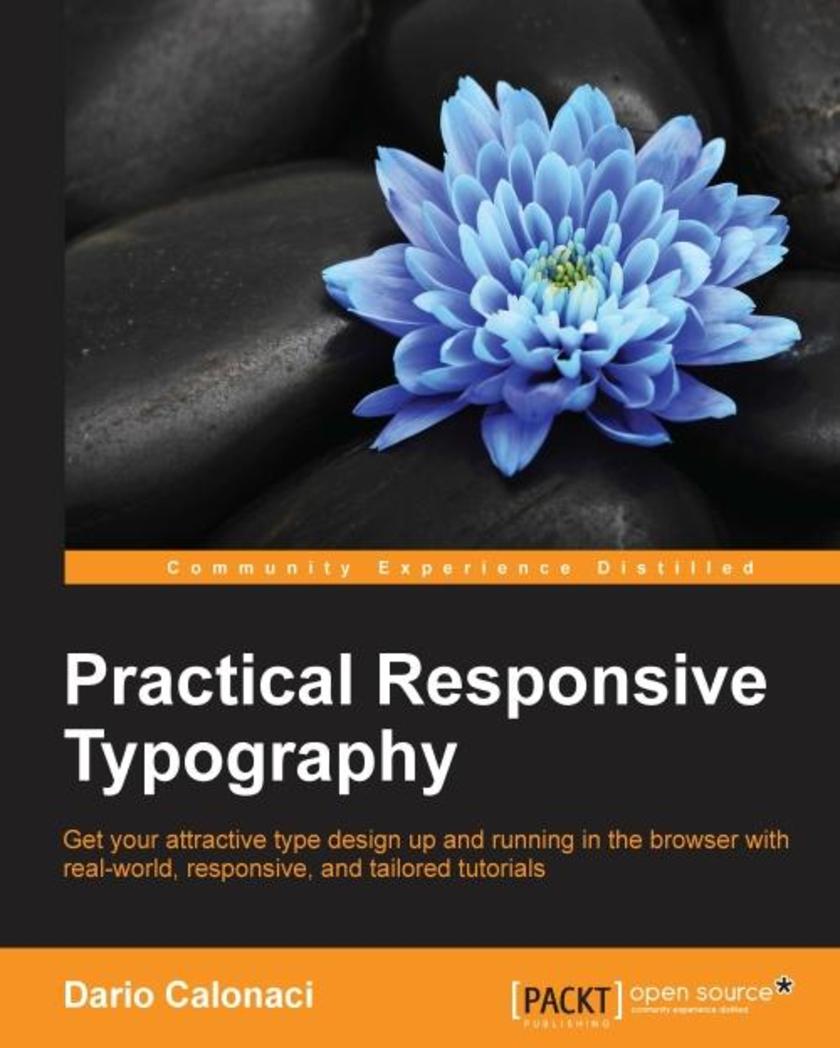
Practical Responsive Typography
¥54.49
Get your attractive type design up and running in the browser with real-world, responsive, and tailored tutorials About This Book No coding experience necessary - get started with responsive typography today! Find out how to customize your own typography designs to truly own your website's identity From the basics to cutting-edge design, this book is the perfect guide Who This Book Is For This book is for web developers familiar with the basics of HTML5 and CSS3 who want to learn how to implement responsive typography. No coding experience is required, so dive in and get started! What You Will Learn Customize and personalize fonts on a responsive website Learn how to write CSS3 rules for viewports Define media queries and write them using CSS3 and HTML5 Implement SASS typography techniques to minimize the CSS output and manage the font variables Get to grips with dropcaps and learn how to use them effectively on the web In Detail Typography is an essential part of any website’s design. It can help you stand out from the crowd, communicate with clarity, and cultivate a distinctive identity. Practical Responsive Typography demonstrates how to use typography to greatest effect. With this book you won't underestimate it's importance - you'll be in complete control over this crucial component of web design. From scaling and optimizing screen spaces to using a range of different web fonts, you'll quickly get up to speed with the practical considerations behind successful typography. But more than the fundamentals, you'll also find out how to go further by customizing typography designs to suit your identity. Style and approach This is an easy-to-follow guide full of real-world examples and tutorials. Each typography style and rule is clearly explained and placed in context.
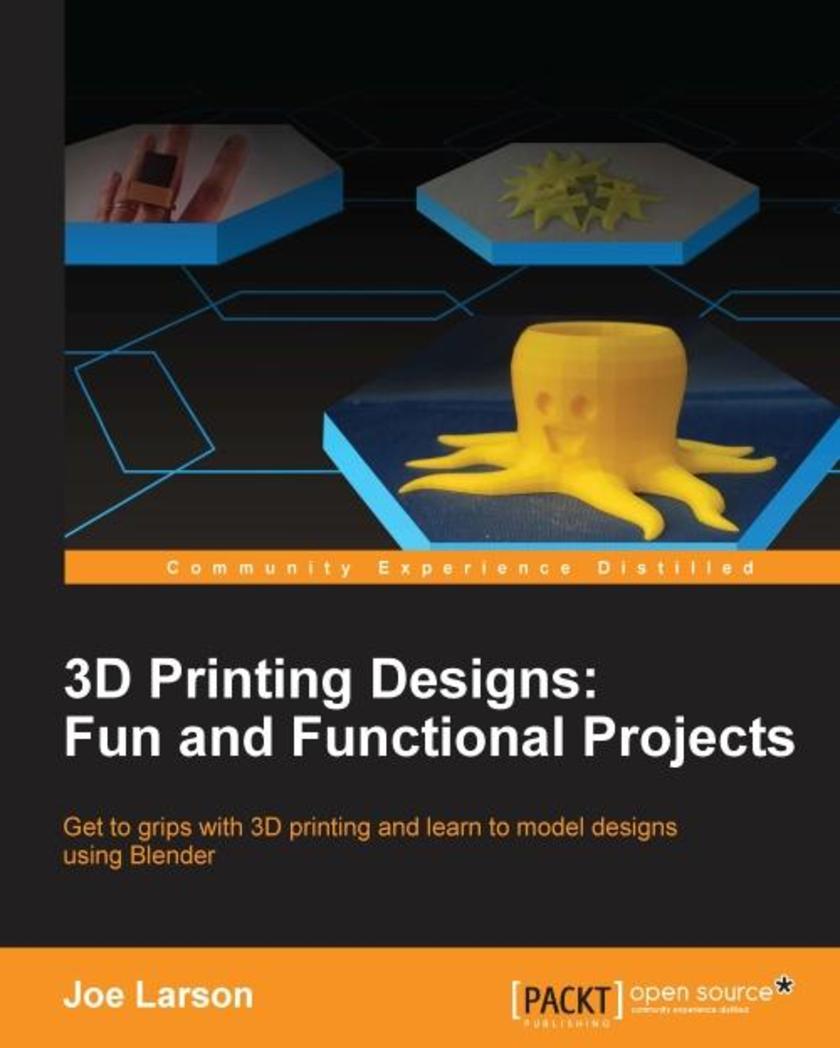
3D Printing Designs: Fun and Functional Projects
¥54.49
Get to grips with 3D printing and learn to model designs using Blender About This Book From the author who brought you the first practical look at 3D printing with 3D Printing Blueprints Get a comprehensive coverage of the prototyping techniques you need to know to start printing your own 3D designs Rekindle your mathematical genius to design personalized objects for complex puzzles Who This Book Is For If you’re new to the world of 3D printing, this is the book for you. Some basic knowledge of Blender and geometry would be helpful, but is not necessary. What You Will Learn Get to know about the different types of 3D printers and their limitations See how Y, H, and T shapes illustrate different ideas of successful 3D design for home 3D printers Set up and configure Blender to model a file for 3D printing Understand material characteristics, printing specifications, tolerances, and design tips Work through the techniques of editing complex meshes, smoothing, combining shapes, and exporting them into STL files for printing Break down complex geometries into multiple simple shapes and model them in layers using Blender Design, manipulate, and export 3D models for 3D printing with Blender Master the art of creating meshes, scaling, subdivision, and adding detail with the Boolean modifier as well as sculpting a custom shape Cut a model into small pieces and understand how to design complex interlocking joints that form a part of a jigsaw puzzle In Detail 3D printing has revolutionized the way that global industries conceptualize and design products for mass consumption. Considered as the next “trillion-dollar” business, every industry is in the race to equip its personnel with techniques to prototype and simplify complex manufacturing process. This book will take you through some simple to complex and effective principles of designing 3D printed objects using Blender. There is a comprehensive coverage of projects such as a 3D print-ready octopus pencil holder, which will teach you how to add basic geometric shapes, and use techniques such as extruding and subdividing to transform these shapes into complex meshes. Furthermore, you’ll learn to use various techniques to derive measurements for an object, model these objects using Blender, organize the parts into layers, and later combine them to create the desired object with the help of a 3D printable SD card holder ring design project. The final project will help you master the techniques of designing simple to complex puzzles models for 3D printing. Through the course of the book, we'll explore various robust sculpting methods supported by Blender to create objects. You’ll move, rotate, and scale the object, and manipulate the view. You’ll edit objects with actions such as bends or curves, similar to drawing or building up a clay structure of different shapes and sizes. By the end of the book, you will have gained thorough practical hands-on experience to be able to create a real-world 3D printable object of your choice. Style and approach This is a hands-on guide to the world of 3D printing. With the help of simple to complex projects, you'll learn various techniques to design 3D printable objects using Blender.
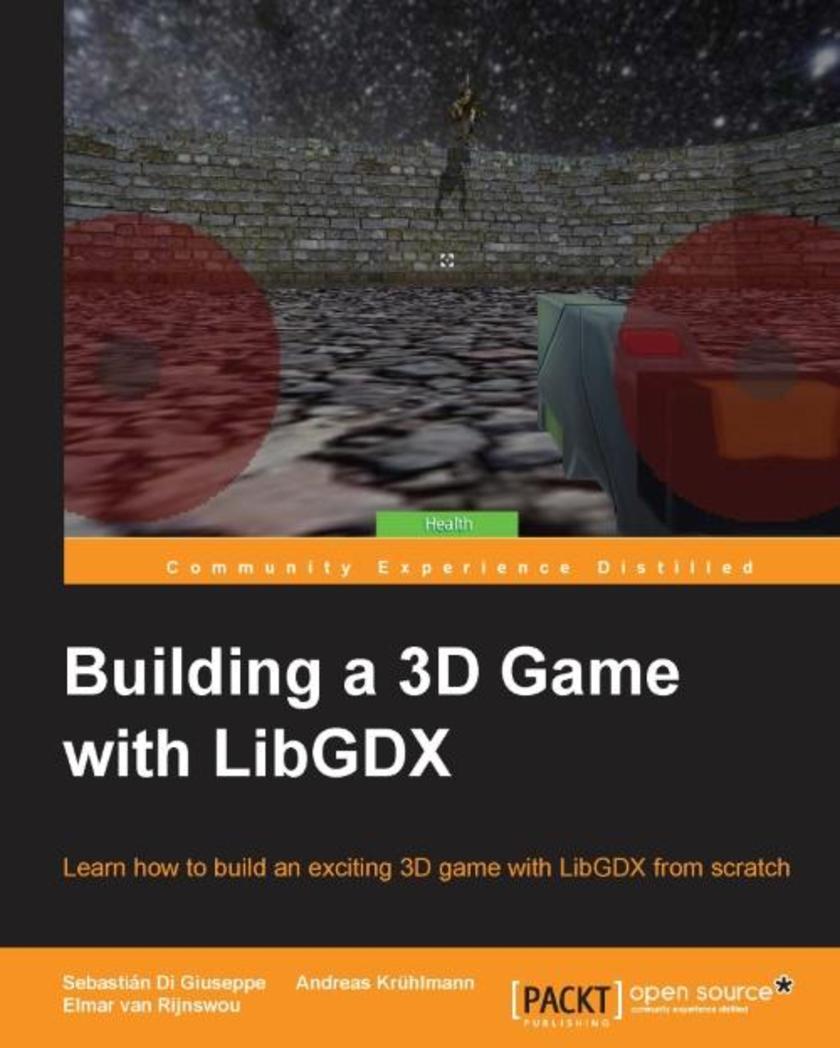
Building a 3D Game with LibGDX
¥54.49
Learn how to build an exciting 3D game with LibGDX from scratch About This Book Implement an exhaustive list of features that LibGDX unleashes to build your 3D game. Write, test, and debug your application on your desktop and deploy them on multiple platforms. Gain a clear understanding of the physics behind LibGDX and libraries like OpenGL and WebGL that make up LibGDX. Who This Book Is For If you are a game developer or enthusiasts who want to build 3D games with LibGDX, then this book is for you. A basic knowledge of LibGDX and Java programming is appreciated. What You Will Learn Learn the potential of LibGDX in game development Understand the LibGDX architecture and explore platform limitation and variations Explore the various approaches for game development using LibGDX Learn about the common mistakes and possible solutions of development Discover the 3D workflow with Blender and how it works with LibGDX Implement 3D models along with textures and animations into your games Familiarize yourself with Scene2D and its potential to boost your game’s design In Detail LibGDX is a hugely popular open source, cross-platform, Java-based game development framework built for the demands of cross-platform game development. This book will teach readers how the LibGDX framework uses its 3D rendering API with the OpenGL wrapper, in combination with Bullet Physics, 3D Particles, and Shaders to develop and deploy a game application to different platforms You will start off with the basic Intellij environment, workflow and set up a LibGDX project with necessary APIs for 3D development. You will then go through LibGDX’s 3D rendering API main features and talk about the camera used for 3D. Our next step is to put everything together to build a basic 3D game with Shapes, including basic gameplay mechanics and basic UI. Next you will go through modeling, rigging, and animation in Blender. We will then talk about refining mechanics, new input implementations, implementing enemy 3D models, mechanics, and gameplay balancing. The later part of this title will help you to manage secondary resources like audio, music and add 3D particles in the game to make the game more realistic. You will finally test and deploy the app on a multitude of different platforms, ready to start developing your own titles how you want! Style and approach A step by step guide on building a 3D game with LibGDX and implementing an exhaustive list of features that you would wish to incorporate into your 3D game
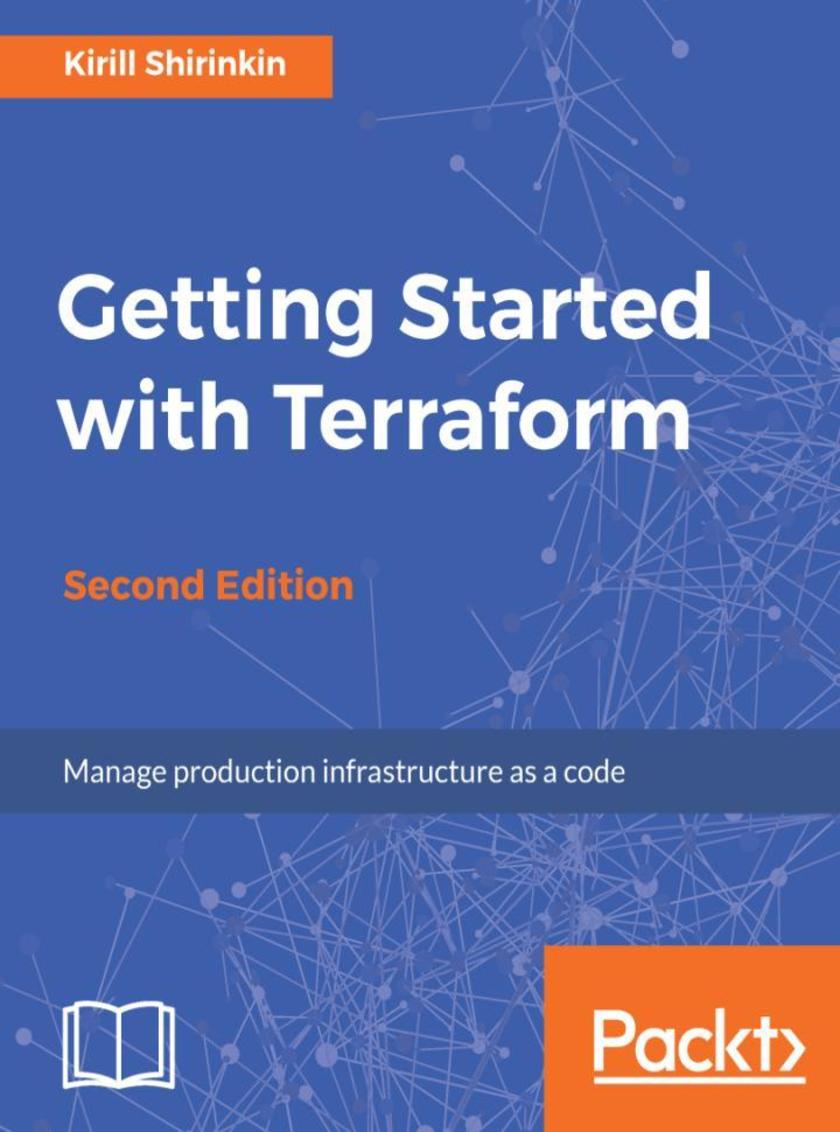
Getting Started with Terraform - Second Edition
¥54.49
Build, Manage and Improve your infrastructure effortlessly. About This Book ? An up-to-date and comprehensive resource on Terraform that lets you quickly and efficiently launch your infrastructure ? Learn how to implement your infrastructure as code and make secure, effective changes to your infrastructure ? Learn to build multi-cloud fault-tolerant systems and simplify the management and orchestration of even the largest scale and most complex cloud infrastructures Who This Book Is For This book is for developers and operators who already have some exposure to working with infrastructure but want to improve their workflow and introduce infrastructure as a code practice. Knowledge of essential Amazon Web Services components (EC2, VPC, IAM) would help contextualize the examples provided. Basic understanding of Jenkins and Shell *s will be helpful for the chapters on the production usage of Terraform. What You Will Learn ? Understand what Infrastructure as Code (IaC) means and why it matters ? Install, configure, and deploy Terraform ? Take full control of your infrastructure in the form of code ? Manage complete infrastructure, starting with a single server and scaling beyond any limits ? Discover a great set of production-ready practices to manage infrastructure ? Set up CI/CD pipelines to test and deliver Terraform stacks ? Construct templates to simplify more complex provisioning tasks In Detail Terraform is a tool used to efficiently build, configure, and improve the production infrastructure. It can manage the existing infrastructure as well as create custom in-house solutions. This book shows you when and how to implement infrastructure as a code practices with Terraform. It covers everything necessary to set up the complete management of infrastructure with Terraform, starting with the basics of using providers and resources. It is a comprehensive guide that begins with very small infrastructure templates and takes you all the way to managing complex systems, all using concrete examples that evolve over the course of the book. The book ends with the complete workflow of managing a production infrastructure as code—this is achieved with the help of version control and continuous integration. The readers will also learn how to combine multiple providers in a single template and manage different code bases with many complex modules. It focuses on how to set up continuous integration for the infrastructure code. The readers will be able to use Terraform to build, change, and combine infrastructure safely and efficiently. Style and approach This book will help and guide you to implement Terraform in your infrastructure. The readers will start by working on very small infrastructure templates and then slowly move on to manage complex systems, all by using concrete examples that will evolve during the course of the book.
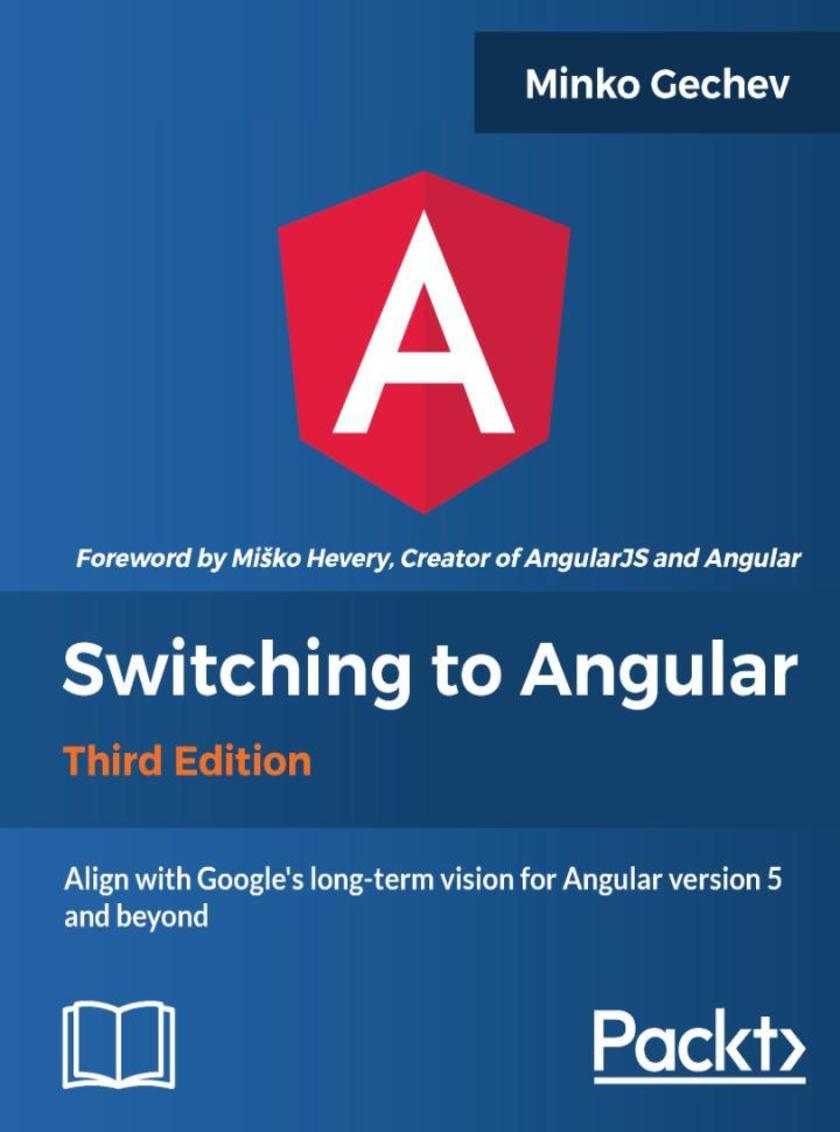
Switching to Angular - Third Edition
¥54.49
Switching to Angular, Third Edition is the go-to book to align and get started with the Angular JavaScript framework. Angular contributor and international speaker Minko Gechev will help you square up and start building Angular apps and provide you an insight to the Google’s vision for the framework. About This Book ? Get up to date with Google’s vision for Angular ? Align with Angular version 5 and beyond from any direction with confidence ? Start using TypeScript to supercharge your Angular applications ? Understand the new framework from AngularJS perspective using your prior experience ? Use Angular to quickly build fast and scalable enterprise applications Who This Book Is For This book is for software developers who want to align with a modern version of Angular that’s aligned with Google’s vision of Angular version 5 and beyond, using stable APIs that they can depend on today and in the future. Also for anyone assessing changes to Angular and squaring up for a strategic migration to Angular v5, and for AngularJS developers who want to transfer their mindset to modern Angular version 5 and beyond. What You Will Learn ? Align with Google’s vision for Angular version 5 and beyond ? Confidently move forwards with a long-term understanding of Angular ? Use stable APIs in Angular to build future-proof, blazingly fast, enterprise applications ? Work with TypeScript to supercharge your Angular applications ? Understand the core concepts of Angular, aligned with the vision from Google ? Be ready with Angular from any direction - whether you’re building new new apps with the Angular and ASP.NET stack or upgrading from AngularJS with ngUpgrade In Detail Align your work to stable APIs of Angular, version 5 and beyond, with Angular expert Minko Gechev. Angular is the modern Google framework for you to build high-performing, SEO-friendly, and robust web applications. Switching to Angular, Third Edition shows you how you can align your current and future development with Google’s long term vision for Angular. Gechev shares his expert knowledge and community involvement to give you the clarity you need to confidently switch into Angular and stable APIs. Minko Gechev helps you square up to Angular with an overview of the framework, and understand the long term building blocks of Google’s web framework. Gechev then gives you the lowdown on TypeScript, with a crash-course so you can take advantage of Angular in its native, statically-typed environment. You’ll next move on to see how you can line up with Angular dependency injection, plus how Angular router and forms, and Angular pipes, are designed to work for your projects today and in the future. You'll be squared up and aligned with the vision and techniques of the one Angular, and be ready to start building quick and efficient Angular applications. You’ll know how to take advantage of the latest Angular features, and the core, stable APIs that you can depend on. You’ll be ready to confidently plan your future with the Angular framework. Style and approach In this book, Minko Gechev continues his direct style of sharing knowledge about Angular that he's developed across more than 40 international presentations to Angular developers. First, Minko explains Google's vision of Angular to you, and then you dive into a clear tutorial to work with Angular that's aligned with Google's vision of Angular.

Hands-On Data Visualization with Bokeh
¥54.49
Learn how to create interactive and visually aesthetic plots using the Bokeh package in Python About This Book ? A step by step approach to creating interactive plots with Bokeh ? Go from nstallation all the way to deploying your very own Bokeh application ? Work with a real time datasets to practice and create your very own plots and applications Who This Book Is For This book is well suited for data scientists and data analysts who want to perform interactive data visualization on their web browsers using Bokeh. Some exposure to Python programming will be helpful, but prior experience with Bokeh is not required. What You Will Learn ? Installing Bokeh and understanding its key concepts ? Creating plots using glyphs, the fundamental building blocks of Bokeh ? Creating plots using different data structures like NumPy and Pandas ? Using layouts and widgets to visually enhance your plots and add a layer of interactivity ? Building and hosting applications on the Bokeh server ? Creating advanced plots using spatial data In Detail Adding a layer of interactivity to your plots and converting these plots into applications hold immense value in the field of data science. The standard approach to adding interactivity would be to use paid software such as Tableau, but the Bokeh package in Python offers users a way to create both interactive and visually aesthetic plots for free. This book gets you up to speed with Bokeh - a popular Python library for interactive data visualization. The book starts out by helping you understand how Bokeh works internally and how you can set up and install the package in your local machine. You then use a real world data set which uses stock data from Kaggle to create interactive and visually stunning plots. You will also learn how to leverage Bokeh using some advanced concepts such as plotting with spatial and geo data. Finally you will use all the concepts that you have learned in the previous chapters to create your very own Bokeh application from scratch. By the end of the book you will be able to create your very own Bokeh application. You will have gone through a step by step process that starts with understanding what Bokeh actually is and ends with building your very own Bokeh application filled with interactive and visually aesthetic plots. Style and approach This books take you through a step by step process that starts with understanding what Bokeh actually is and ends with building your very own Bokeh application filled with interactive and visually aesthetic plots that will amaze your users.
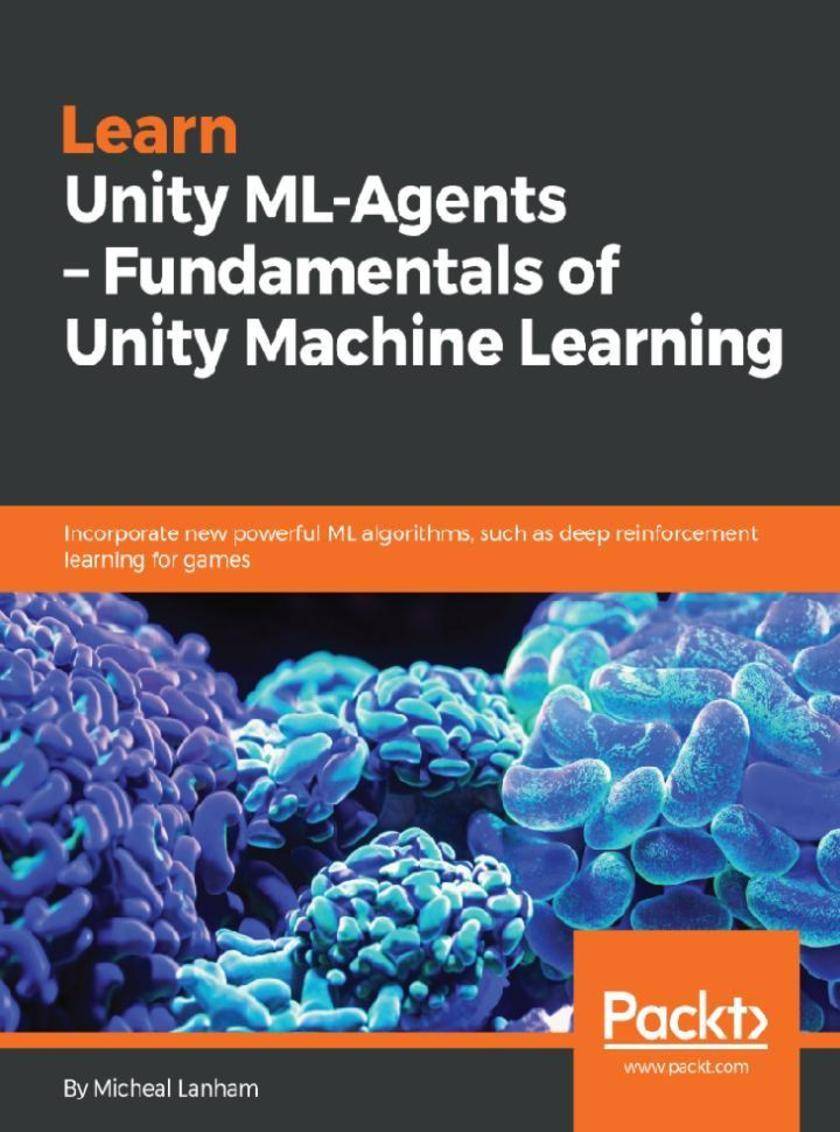
Learn Unity ML-Agents – Fundamentals of Unity Machine Learning
¥54.49
Transform games into environments using machine learning and Deep learning with Tensorflow, Keras, and Unity About This Book ? Learn how to apply core machine learning concepts to your games with Unity ? Learn the Fundamentals of Reinforcement Learning and Q-Learning and apply them to your games ? Learn How to build multiple asynchronous agents and run them in a training scenario Who This Book Is For This book is intended for developers with an interest in using Machine learning algorithms to develop better games and simulations with Unity. The reader will be required to have a working knowledge of C# and a basic understanding of Python. What You Will Learn ? Develop Reinforcement and Deep Reinforcement Learning for games. ? Understand complex and advanced concepts of reinforcement learning and neural networks ? Explore various training strategies for cooperative and competitive agent development ? Adapt the basic script components of Academy, Agent, and Brain to be used with Q Learning. ? Enhance the Q Learning model with improved training strategies such as Greedy-Epsilon exploration ? Implement a simple NN with Keras and use it as an external brain in Unity ? Understand how to add LTSM blocks to an existing DQN ? Build multiple asynchronous agents and run them in a training scenario In Detail Unity Machine Learning agents allow researchers and developers to create games and simulations using the Unity Editor, which serves as an environment where intelligent agents can be trained with machine learning methods through a simple-to-use Python API. This book takes you from the basics of Reinforcement and Q Learning to building Deep Recurrent Q-Network agents that cooperate or compete in a multi-agent ecosystem. You will start with the basics of Reinforcement Learning and how to apply it to problems. Then you will learn how to build self-learning advanced neural networks with Python and Keras/TensorFlow. From there you move o n to more advanced training scenarios where you will learn further innovative ways to train your network with A3C, imitation, and curriculum learning models. By the end of the book, you will have learned how to build more complex environments by building a cooperative and competitive multi-agent ecosystem. Style and approach This book focuses on the foundations of ML, RL and DL for building agents in a game or simulation
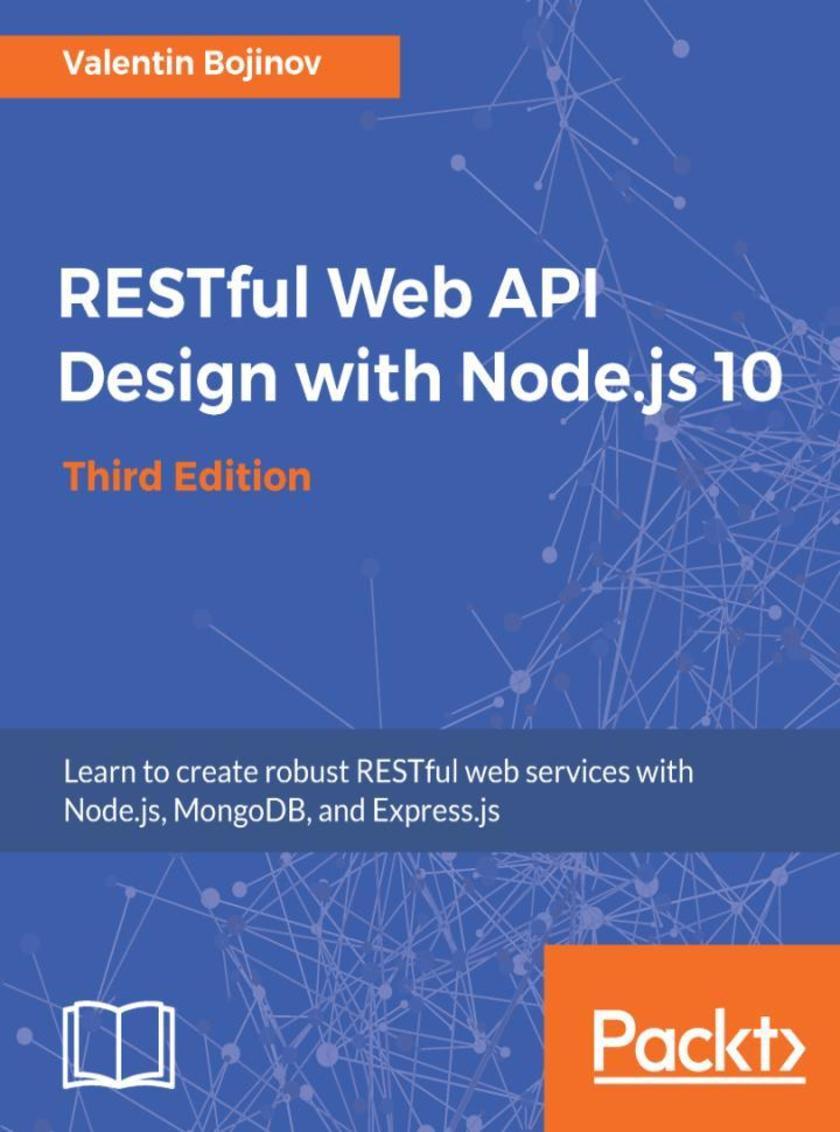
RESTful Web API Design with Node.js 10
¥54.49
Design and implement scalable and maintainable RESTful solutions with Node.js 10 About This Book ? Create rich and scalable RESTful API solutions from scratch ? Explore the new features of Node.js 10, Express 4.0, and MongoDB ? Integrate MongoDB in your Node.js application to store and secure your data Who This Book Is For If you are a web developer keen to enrich your development skills to create server-side RESTful applications based on the Node.js platform, this book is for you. Some knowledge of REST would be an added advantage, but is definitely not a necessity. What You Will Learn ? Install, develop, and test your own Node.js user modules ? Understand the differences between HTTP and RESTful applications ? Use self-descriptive URLs and set accurate HTTP status codes ? Eliminate third-party dependencies in your tests with mocking ? Implement automation tests for a REST-enabled endpoint with Mocha ? Secure your services with NoSQL database integration within Node.js applications ? Integrate a simple frontend using JavaScript libraries available on a CDN server In Detail When building RESTful services, it is really important to choose the right framework. Node.js, with its asynchronous, event-driven architecture, is exactly the right choice for building RESTful APIs. This third edition of RESTful Web API Design with Node.js 10 will teach you to create scalable and rich RESTful applications based on the Node.js platform. You will be introduced to the latest NPM package handler and understand how to use it to customize your RESTful development process. You will begin by understanding the key principle that makes an HTTP application a RESTful-enabled application. After writing a simple HTTP request handler, you will create and test Node.js modules using automated tests and mock objects; explore using the NoSQL database, MongoDB, to store data; and get to grips with using self-descriptive URLs. You’ll learn to set accurate HTTP status codes along with understanding how to keep your applications backward-compatible. Also, while implementing a full-fledged RESTful service, you will use Swagger to document the API and implement automation tests for a REST-enabled endpoint with Mocha. Lastly, you will explore some authentication techniques to secure your application. Style and approach Step-by-step practical guide to building RESTful applications
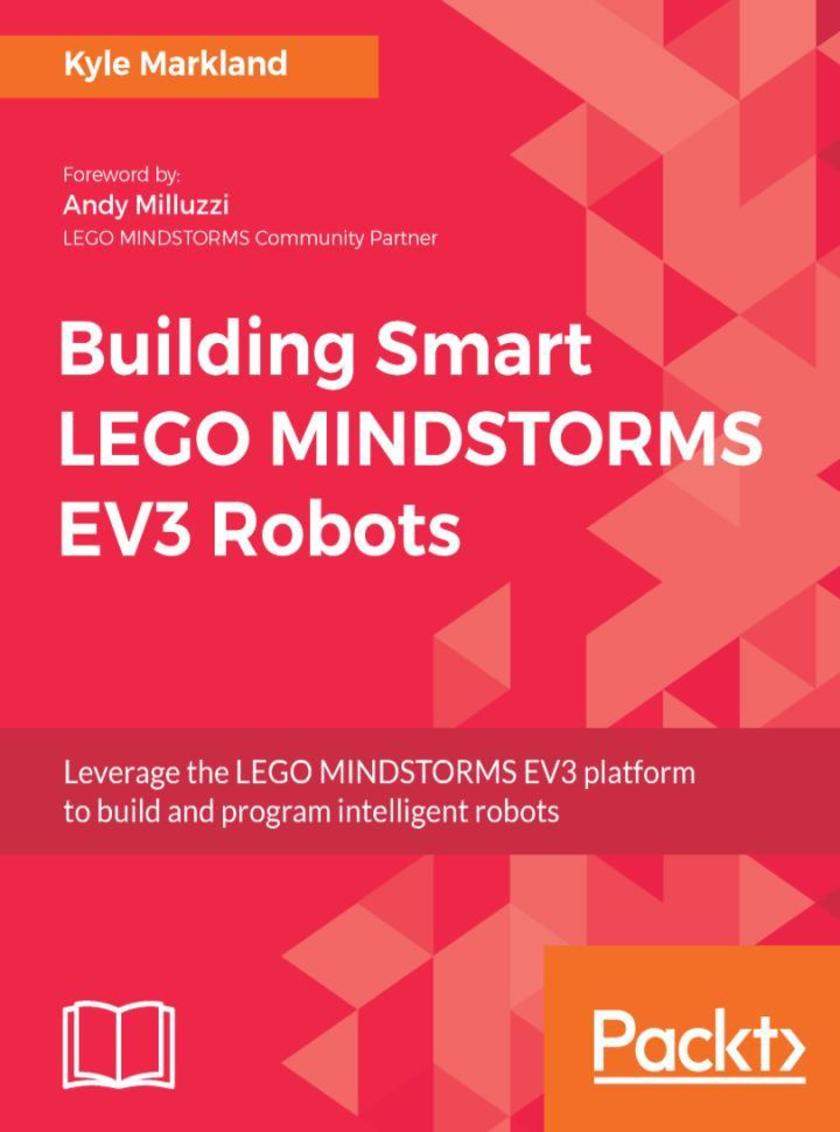
Building Smart LEGO MINDSTORMS EV3 Robots
¥54.49
Build and program smart robots with the EV3. About This Book ? Efficiently build smart robots with the LEGO MINDSTORMS EV3 ? Discover building techniques and programming concepts that are used by engineers to prototype robots in the real world ? This project-based guide will teach you how to build exciting projects such as the objecta-tracking tank, ultimate all-terrain vehicle, remote control race car, or even a GPS-navigating autonomous vehicle Who This Book Is For This book is for hobbyists, robotic engineers, and programmers who understand the basics of the EV3 programming language and are familiar with building with LEGO Technic and want to try some advanced projects. If you want to learn some new engineering techniques and take your experience with the EV3 to the next level, then this book is for you. What You Will Learn ? Understand the characteristics that make a robot smart ? Grasp proportional beacon following and use proximity sensors to track an object ? Discover how mechanisms such as rack-and-pinion and the worm gear work ? Program a custom GUI to make a robot more user friendly ? Make a fun and quirky interactive robot that has its own personality ? Get to know the principles of remote control and programming car-style steering ? Understand some of the mechanisms that enable a car to drive ? Navigate to a destination with a GPS receiver In Detail Smart robots are an ever-increasing part of our daily lives. With LEGO MINDSTORMS EV3, you can now prototype your very own small-scale smart robot that uses specialized programming and hardware to complete a mission. EV3 is a robotics platform for enthusiasts of all ages and experience levels that makes prototyping robots accessible to all. This book will walk you through six different projects that range from intermediate to advanced level. The projects will show you building and programming techniques that are used by engineers in the real world, which will help you build your own smart robot. You'll see how to make the most of the EV3 robotics platform and build some awesome smart robots. The book starts by introducing some real-world examples of smart robots. Then, we'll walk you through six different projects and explain the features that allow these robots to make intelligent decisions. The book will guide you as you build your own object-tracking tank, a box-climbing robot, an interactive robotic shark, a quirky bipedal robot, a speedy remote control race car, and a GPS-navigating robot. By the end of this book, you'll have the skills necessary to build and program your own smart robots with EV3. Style and approach This book will introduce you to the world of smart robots, then guide you through six different projects that can be completed with the LEGO MINDSTORMS EV3. The projects range from intermediate to advanced difficulty. The book will enable you to learn by example, walking you through the building and programming for each project and teaching you about the engineering concepts that allow each smart robot to complete its mission.
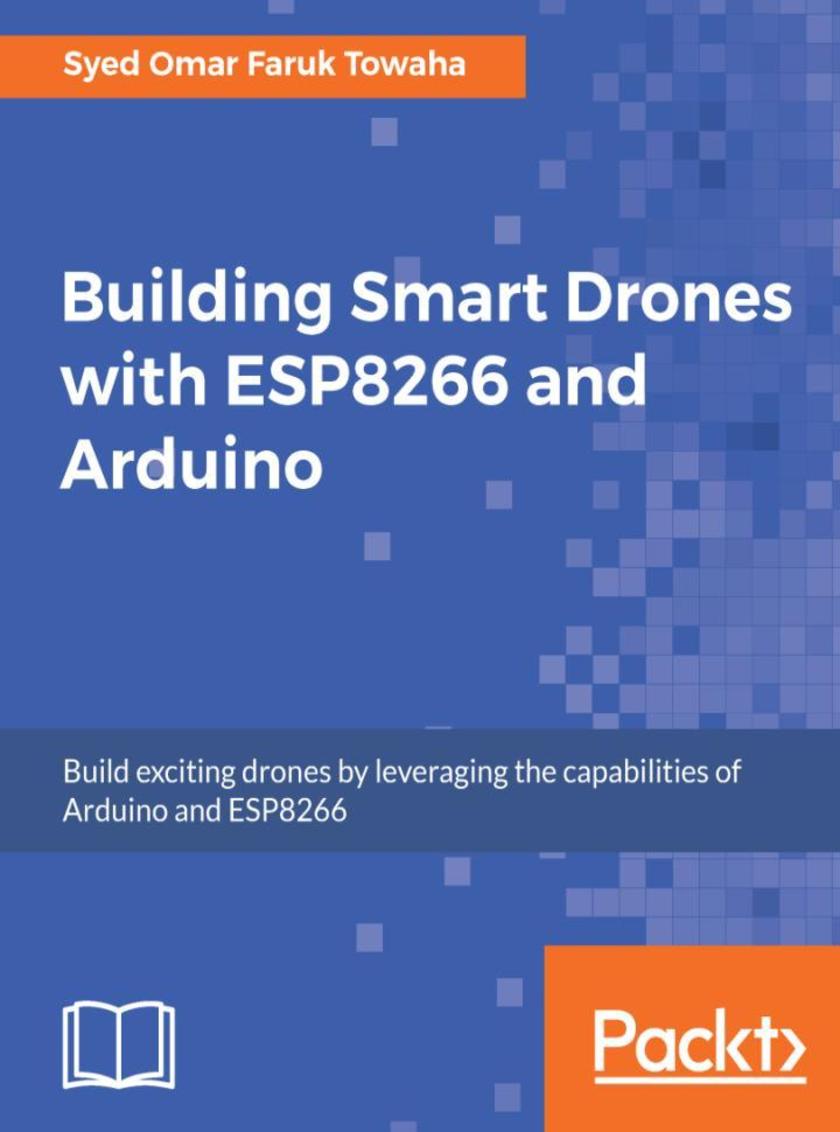
Building Smart Drones with ESP8266 and Arduino
¥54.49
Leverage the WiFi chip to build exciting Quadcopters About This Book ? Learn to create a fully functional Drone with Arduino and ESP8266 and their modified versions of hardware. ? Enhance your drone's functionalities by implementing smart features. ? A project-based guide that will get you developing next-level drones to help you monitor a particular area with mobile-like devices. Who This Book Is For If you are a programmer or a DIY enthusiast and keen to create a fully functional drone with Arduino and ESP8266, then this book is for you. Basic skills in electronics and programming would be beneficial. This book is not for the beginners as it includes lots of ideas not detailed how you can do that. If you are a beginner, then you might get lost here. The prerequisites of the book include a good knowledge of Arduino, electronics, programming in C or C++ and lots of interest in creating things out of nothing. What You Will Learn ? Includes a number of projects that utilize different ESP8266 and Arduino capabilities, while interfacing with external hardware ? Covers electrical engineering and programming concepts, interfacing with the World through analog and digital sensors, communicating with a computer and other devices, and internet connectivity ? Control and fly your quadcopter, taking into account weather conditions ? Build a drone that can follow the user wherever he/she goes ? Build a mission-control drone and learn how to use it effectively ? Maintain your vehicle as much as possible and repair it whenever required In Detail With the use of drones, DIY projects have taken off. Programmers are rapidly moving from traditional application programming to developing exciting multi-utility projects. This book will teach you to build industry-level drones with Arduino and ESP8266 and their modified versions of hardware. With this book, you will explore techniques for leveraging the tiny WiFi chip to enhance your drone and control it over a mobile phone. This book will start with teaching you how to solve problems while building your own WiFi controlled Arduino based drone. You will also learn how to build a Quadcopter and a mission critical drone. Moving on you will learn how to build a prototype drone that will be given a mission to complete which it will do it itself. You will also learn to build various exciting projects such as gliding and racing drones. By the end of this book you will learn how to maintain and troubleshoot your drone. By the end of this book, you will have learned to build drones using ESP8266 and Arduino and leverage their functionalities to the fullest. Style and approach This is an easy-to-follow guide with illustrations and technical de*ions to help you assemble your vehicle.
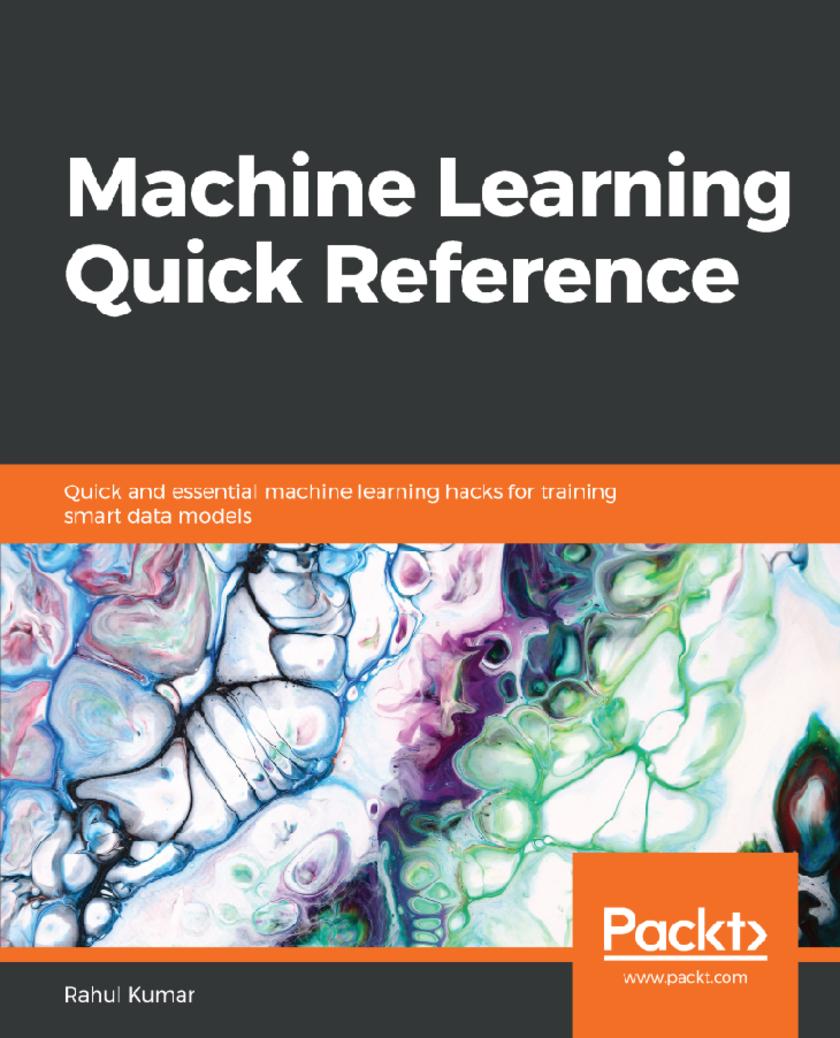
Machine Learning Quick Reference
¥54.49
Your hands-on reference guide to developing, training, and optimizing your machine learning models Key Features * Your guide to learning efficient machine learning processes from scratch * Explore expert techniques and hacks for a variety of machine learning concepts * Write effective code in R, Python, Scala, and Spark to solve all your machine learning problems Book Description Machine learning makes it possible to learn about the unknowns and gain hidden insights into your datasets by mastering many tools and techniques. This book guides you to do just that in a very compact manner. After giving a quick overview of what machine learning is all about, Machine Learning Quick Reference jumps right into its core algorithms and demonstrates how they can be applied to real-world scenarios. From model evaluation to optimizing their performance, this book will introduce you to the best practices in machine learning. Furthermore, you will also look at the more advanced aspects such as training neural networks and work with different kinds of data, such as text, time-series, and sequential data. Advanced methods and techniques such as causal inference, deep Gaussian processes, and more are also covered. By the end of this book, you will be able to train fast, accurate machine learning models at your fingertips, which you can easily use as a point of reference. What you will learn * Get a quick rundown of model selection, statistical modeling, and cross-validation * Choose the best machine learning algorithm to solve your problem * Explore kernel learning, neural networks, and time-series analysis * Train deep learning models and optimize them for maximum performance * Briefly cover Bayesian techniques and sentiment analysis in your NLP solution * Implement probabilistic graphical models and causal inferences * Measure and optimize the performance of your machine learning models Who this book is for If you’re a machine learning practitioner, data scientist, machine learning developer, or engineer, this book will serve as a reference point in building machine learning solutions. You will also find this book useful if you’re an intermediate machine learning developer or data scientist looking for a quick, handy reference to all the concepts of machine learning. You’ll need some exposure to machine learning to get the best out of this book.
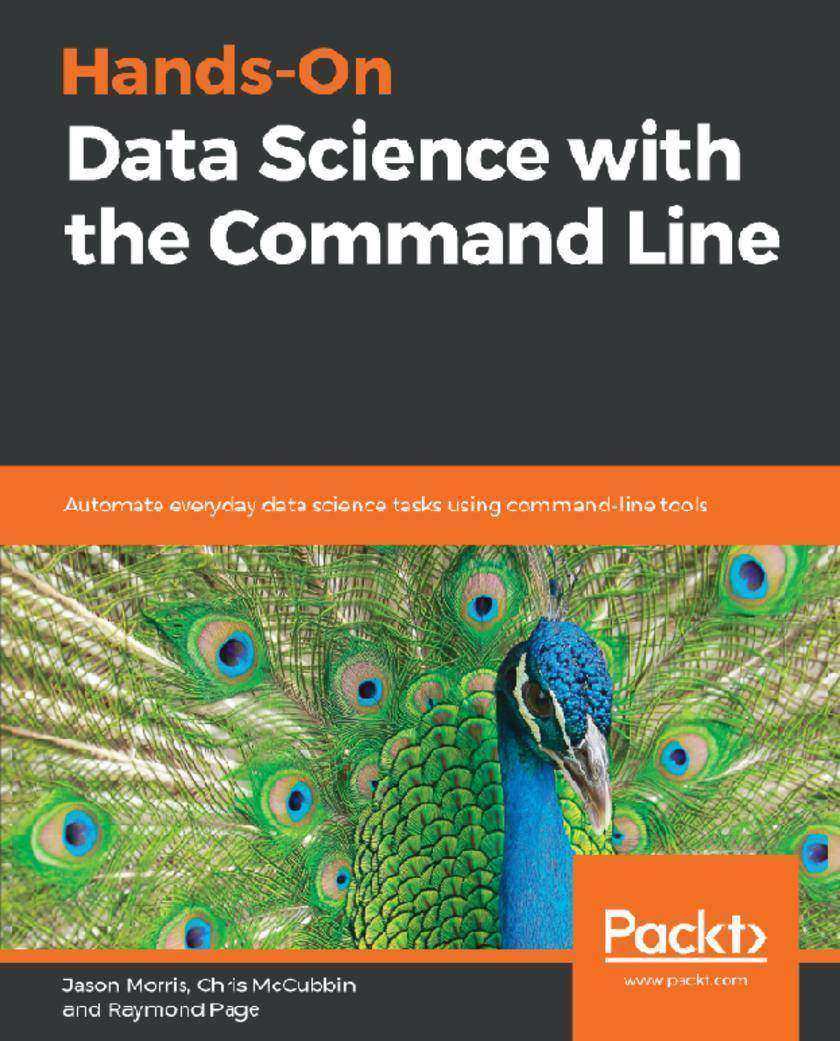
Hands-On Data Science with the Command Line
¥54.49
Big data processing and analytics at speed and scale using command line tools. Key Features * Perform string processing, numerical computations, and more using CLI tools * Understand the essential components of data science development workflow * Automate data pipeline scripts and visualization with the command line Book Description The Command Line has been in existence on UNIX-based OSes in the form of Bash shell for over 3 decades. However, very little is known to developers as to how command-line tools can be OSEMN (pronounced as awesome and standing for Obtaining, Scrubbing, Exploring, Modeling, and iNterpreting data) for carrying out simple-to-advanced data science tasks at speed. This book will start with the requisite concepts and installation steps for carrying out data science tasks using the command line. You will learn to create a data pipeline to solve the problem of working with small-to medium-sized files on a single machine. You will understand the power of the command line, learn how to edit files using a text-based and an. You will not only learn how to automate jobs and scripts, but also learn how to visualize data using the command line. By the end of this book, you will learn how to speed up the process and perform automated tasks using command-line tools. What you will learn * Understand how to set up the command line for data science * Use AWK programming language commands to search quickly in large datasets. * Work with files and APIs using the command line * Share and collect data with CLI tools * Perform visualization with commands and functions * Uncover machine-level programming practices with a modern approach to data science Who this book is for This book is for data scientists and data analysts with little to no knowledge of the command line but has an understanding of data science. Perform everyday data science tasks using the power of command line tools.
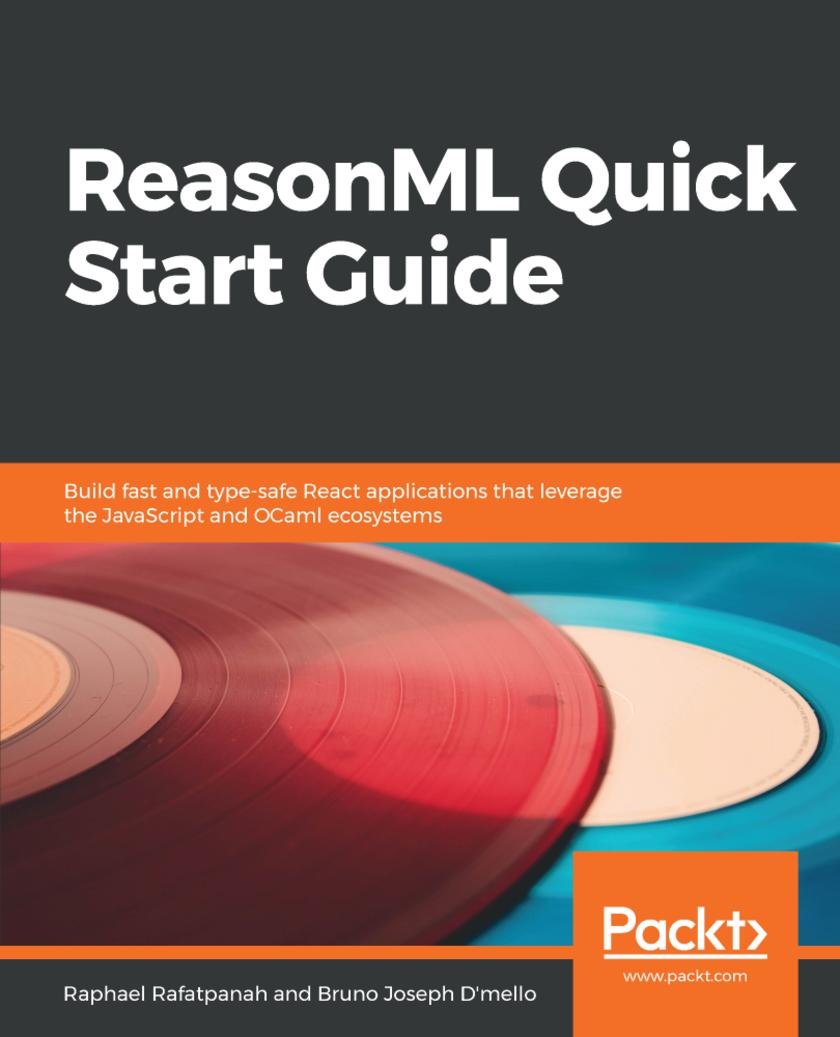
ReasonML Quick Start Guide
¥54.49
A hands on approach to learning ReasonML from the perspective of a web developer. Key Features * Hands on learning by building a real world app shell that includes client-side routing and more. * Understand Reason’s ecosystem including BuckleScript and various npm workflows. * Learn how Reason differs from TypeScript and Flow, and how to use it to make refactoring less stressful. Book Description ReasonML, also known as Reason, is a new syntax and toolchain for OCaml that was created by Facebook and is meant to be approachable for web developers. Although OCaml has several resources, most of them are from the perspective of systems development. This book, alternatively, explores Reason from the perspective of web development. You'll learn how to use Reason to build safer, simpler React applications and why you would want to do so. Reason supports immutability by default, which works quite well in the context of React. In learning Reason, you will also learn about its ecosystem – BuckleScript, JavaScript interoperability, and various npm workflows. We learn by building a real-world app shell, including a client-side router with page transitions, that we can customize for any Reason project. You'll learn how to leverage OCaml's excellent type system to enforce guarantees about business logic, as well as preventing runtime type errors.You'll also see how the type system can help offload concerns that we once had to keep in our heads. We'll explore using CSS-in-Reason, how to use external JSON in Reason, and how to unit-test critical business logic. By the end of the book, you'll understand why Reason is exploding in popularity and will have a solid foundation on which to continue your journey with Reason. What you will learn * Learn why Reason is exploding in popularity and why it's the future of React * Become familiar with Reason's syntax and semantics * Learn about Reason's ecosystem: BuckleScript and JavaScript interoperability * Learn how to build React applications with Reason * Learn how to use Reason's type system as a tool to provide amazing guarantees * Gain a solid foundation on which to continue your journey Who this book is for The target audience of this book is web developers who are somewhat familiar with ReactJS and who want to learn why ReasonML is the future of ReactJS.
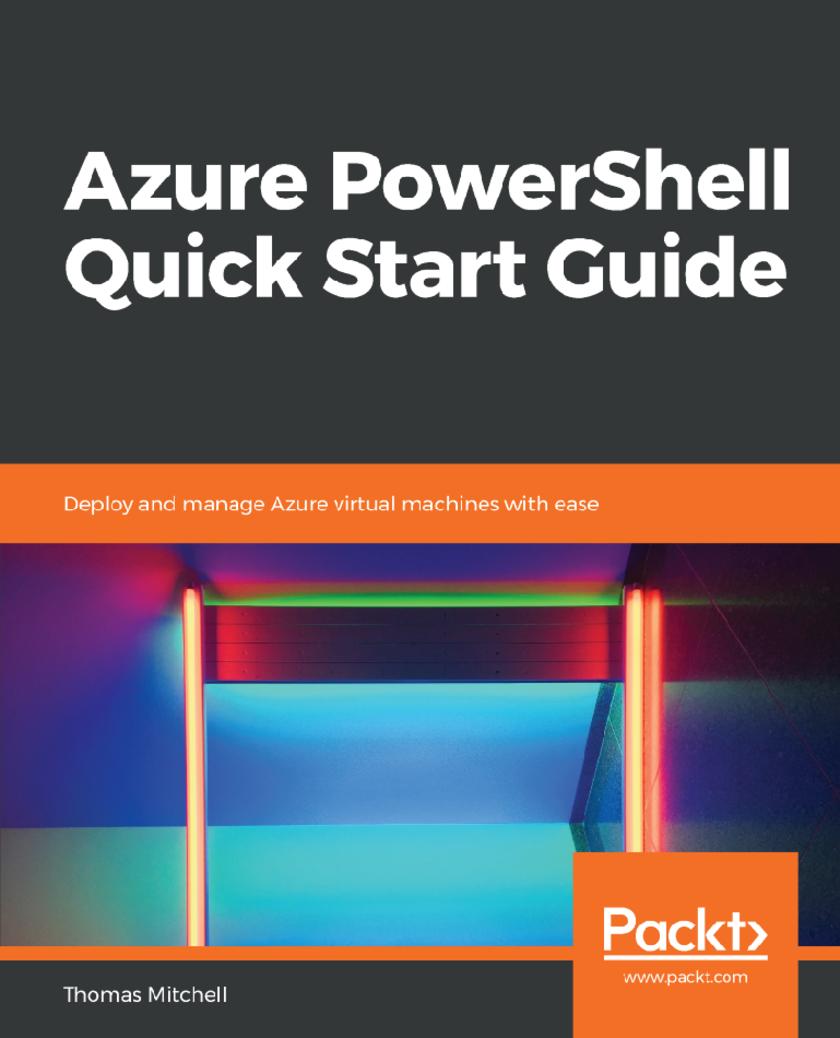
Azure PowerShell Quick Start Guide
¥54.49
Leverage PowerShell to perform many day-to-day tasks in Microsoft Azure Key Features *Deploy and manage Azure virtual machines with PowerShell commands. *Get to grips with core concept of Azure PowerShell such as working with images and disks, custom script extension, high availability and more. *Leverage hands-on projects to successfully apply what you learned through the course of this book. Book Description As an IT professional, it is important to keep up with cloud technologies and learn to manage those technologies. PowerShell is a critical tool that must be learned in order to effectively and more easily manage many Azure resources. This book is designed to teach you to leverage PowerShell to enable you to perform many day-to-day tasks in Microsoft Azure. Taking you through the basic tasks of installing Azure PowerShell and connecting to Azure, you will learn to properly connect to an Azure tenant with PowerShell. Next, you will dive into tasks such as deploying virtual machines with PowerShell, resizing them, and managing their power states with PowerShell. Then, you will learn how to complete more complex Azure tasks with PowerShell, such as deploying virtual machines from custom images, creating images from existing virtual machines, and creating and managing of data disks. Later, you will learn how to snapshot virtual machines, how to encrypt virtual machines, and how to leverage load balancers to ensure high availability with PowerShell. By the end of this book, you will have developed dozens of PowerShell skills that are invaluable in the deployment and management of Azure virtual machines. What you will learn *Manage virtual machines with PowerShell *Resize a virtual machine with PowerShell *Create OS disk snapshots via PowerShell *Deploy new virtual machines from snapshots via PowerShell *Provision and attach data disks to a virtual machine via PowerShell *Load balance virtual machines with PowerShell *Manage virtual machines with custom script extensions Who this book is for This book is intended for IT professionals who are responsible for managing Azure virtual machines. No prior PowerShell or Azure experience is needed.




 购物车
购物车 个人中心
个人中心



